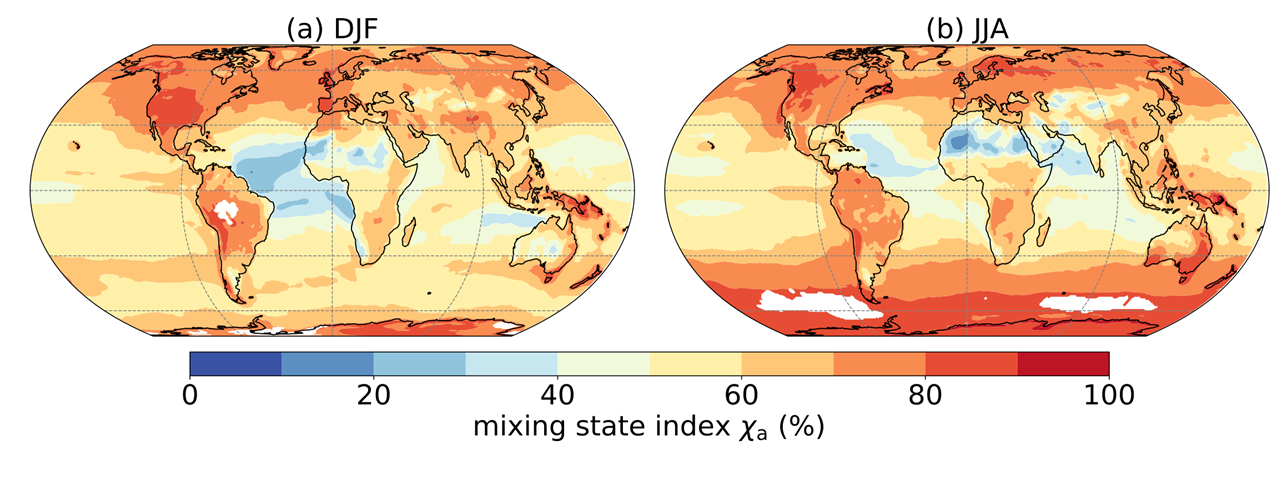AI scales up processed-based aerosol modeling
Submitter
Riemer, Nicole — University of Illinois Urbana-Champaign
West, Matthew — University of Illinois at Urbana-Champaign
Area of Research
Aerosol Processes
Journal Reference
Zheng Z, J Curtis, Y Yao, J Gasparik, V Anantharaj, L Zhao, M West, and N Riemer. 2021. "Estimating Submicron Aerosol Mixing State at the Global Scale With Machine Learning and Earth System Modeling." Earth and Space Science, 8(2), e2020EA001500, 10.1029/2020EA001500.
Science

Figure 1. Seasonally averaged mixing state index χa based on chemical abundance in seasons (a) DJF and (b) JJA. The areas with the mass fraction of any one species higher than 97.5% are masked. From journal.
This study produced global maps that show how the chemicals in atmospheric aerosols are more or less mixed within particles. These maps were produced by a machine-learning model that was first trained on expensive high-detail simulations of aerosols and then applied to global Earth system model output.
Impact
Earth system models (ESMs) are computationally expensive, requiring highly simplified representations of aerosol mixing state, a property that describes how different aerosol chemical species are distributed among and within the aerosol particles. The assumption of whether aerosols are internally (multiple species within a particle), externally (one species per single particle), or intermediately mixed greatly influences the properties of aerosol particles and thereby the prediction of the impacts of air pollution on human health and climate change.
Summary
This study provides an example of the integration of detailed aerosol process modeling and a large-scale ESM via machine learning. We built simplified models using machine learning and highly detailed particle-resolved simulations to infer submicron aerosol mixing state from meteorological parameters and bulk pollution levels. These emulators enable us to estimate the degree of aerosol mixing state at a global scale using only information that ESMs track. We used PartMC-MOSAIC as the particle-resolved model and NCAR's CESM as the ESM. We trained emulators for three different mixing state indices for submicron aerosol in terms of chemical species abundance (χa), the mixing of optically absorbing and non-absorbing species (χo), and the mixing of hygroscopic and non-hygroscopic species (χh). Our global mixing state maps show considerable spatial and seasonal variability unique to each mixing state index. Seasonal averages varied spatially between 13% and 94% for χa, between 38% and 94% for χo, and between 20% and 87% for χh with global annual averages of 67%, 68%, and 56%, respectively. High values in one index can be consistent with low values in another index depending on the grouping of species and their relative abundance, meaning that each mixing state index captures different aspects of the population mixing state.
Keep up with the Atmospheric Observer
Updates on ARM news, events, and opportunities delivered to your inbox
ARM User Profile
ARM welcomes users from all institutions and nations. A free ARM user account is needed to access ARM data.


















